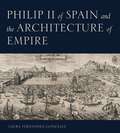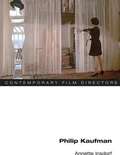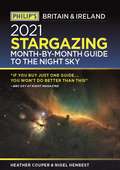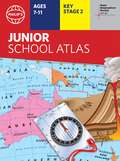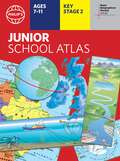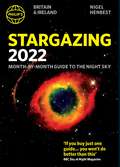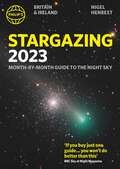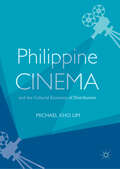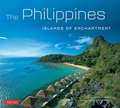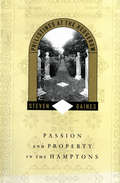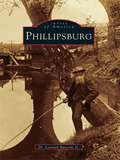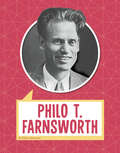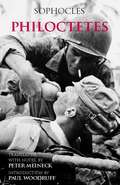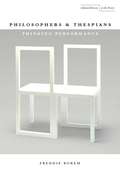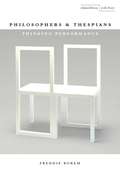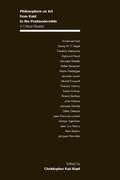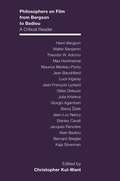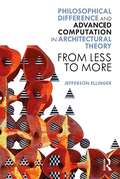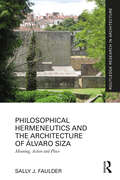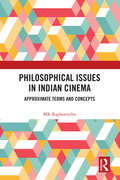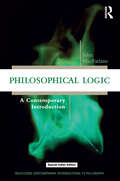- Table View
- List View
Philip II of Spain and the Architecture of Empire
by Laura Fernández-GonzálezPhilip II of Spain was a major patron of the arts, best known for his magnificent palace and royal mausoleum at the Monastery of San Lorenzo of El Escorial. However, neither the king’s monastery nor his collections fully convey the rich artistic landscape of early modern Iberia. In this book, Laura Fernández-González examines Philip’s architectural and artistic projects, placing them within the wider context of Europe and the transoceanic Iberian dominions.Philip II of Spain and the Architecture of Empire investigates ideas of empire and globalization in the art and architecture of the Iberian world during the sixteenth century, a time when the Spanish Empire was one of the largest in the world. Fernández-González illuminates Philip’s use of building regulations to construct an imperial city in Madrid and highlights the importance of his transformation of the Simancas fortress into an archive. She analyzes the refashioning of his imperial image upon his ascension to the Portuguese throne and uses the Hall of Battles in El Escorial as a lens through which to understand visual culture, history writing, and Philip’s kingly image as it was reflected in the funeral commemorations mourning his death across the Iberian world. Positioning Philip’s art and architectural programs within the wider cultural context of politics, legislation, religion, and theoretical trends, Fernández-González shows how design and images traveled across the Iberian world and provides a nuanced assessment of Philip’s role in influencing them. Original and important, this panoramic work will have a lasting impact on Philip II’s artistic legacy. Art historians and scholars of Iberia and sixteenth-century history will especially value Fernández-González’s research.
Philip II of Spain and the Architecture of Empire
by Laura Fernández-GonzálezPhilip II of Spain was a major patron of the arts, best known for his magnificent palace and royal mausoleum at the Monastery of San Lorenzo of El Escorial. However, neither the king’s monastery nor his collections fully convey the rich artistic landscape of early modern Iberia. In this book, Laura Fernández-González examines Philip’s architectural and artistic projects, placing them within the wider context of Europe and the transoceanic Iberian dominions.Philip II of Spain and the Architecture of Empire investigates ideas of empire and globalization in the art and architecture of the Iberian world during the sixteenth century, a time when the Spanish Empire was one of the largest in the world. Fernández-González illuminates Philip’s use of building regulations to construct an imperial city in Madrid and highlights the importance of his transformation of the Simancas fortress into an archive. She analyzes the refashioning of his imperial image upon his ascension to the Portuguese throne and uses the Hall of Battles in El Escorial as a lens through which to understand visual culture, history writing, and Philip’s kingly image as it was reflected in the funeral commemorations mourning his death across the Iberian world. Positioning Philip’s art and architectural programs within the wider cultural context of politics, legislation, religion, and theoretical trends, Fernández-González shows how design and images traveled across the Iberian world and provides a nuanced assessment of Philip’s role in influencing them. Original and important, this panoramic work will have a lasting impact on Philip II’s artistic legacy. Art historians and scholars of Iberia and sixteenth-century history will especially value Fernández-González’s research.
Philip Kaufman (Contemporary Film Directors)
by Annette InsdorfAmerican director Philip Kaufman is hard to pin down: a visual stylist who is truly literate, a San Franciscan who often makes European films, he is an accessible storyteller with a sophisticated touch. Celebrated for his vigorous, sexy, and reflective cinema, Kaufman is best known for his masterpiece The Unbearable Lightness of Being and the astronaut saga The Right Stuff. His latest film, Hemingway & Gellhorn(premiering May 2012 on HBO), stars Nicole Kidman and Clive Owen. In this study, Annette Insdorf argues that the stylistic and philosophical richness of Kaufman's cinema makes him a versatile auteur. She demonstrates Kaufman's skill at adaptation, how he finds the precise cinematic device for a story drawn from seemingly unadaptable sources, and how his eye translates the authorial voice from books that serve as inspiration for his films. Closely analyzing his movies to date (including Invasion of the Body Snatchers, The Wanderers, and Quills), Insdorf links them by exploring the recurring and resonant themes of sensuality, artistic creation, codes of honor, and freedom from manipulation. While there is no overarching label or bold signature that can be applied to his oeuvre, she illustrates the consistency of themes, techniques, images, and concerns that permeates all of Kaufman's works.
Philip's 2021 Stargazing Month-by-Month Guide to the Night Sky in Britain & Ireland
by Nigel Henbest Heather Couper"If you buy just one guide... you won't do better than this" BBC Sky at Night Magazine"You're very much in the dark without this illuminating superstar of a guide." Popular Astronomy"I will continue to enjoy 'Philip's Stargazing' as the months go by" Helen Sharman, Astronaut "Very useful indeed" Chris Lintott, Sky at Night presenterDiscover the latest in star gazing with the new and definitive guide to the night sky.Whether you're a seasoned astronomer or just starting out, Philip's Stargazing 2021 is the only book you'll need. Compiled by experts and specially designed for use in Britain and Ireland, Stargazing 2021 acts as a handily illustrated and comprehensive companion.- 12 Brand-New Maps for year-round astronomical discovery- Month-to-Month informationDaily Moon Phase Calendar, highlighting special lunar events throughout the year- Planet Watch for ideal viewing days in 2021- Avoid light pollution with our detailed Dark Sky Map- Expert advice and insight throughout from internationally renowned Professors Couper and Henbest- Using Binoculars - Stargazing recommendations from expert Robin Scagell- Perfect for home use during lockdown- Complete calendar of major astronomical events, including the Top 20 Sky Sights of 2021- Jargon Buster, explaining common or confusing terms - The planets' movements explained from solar and lunar eclipses to meteor showers and comets
Philip's 2021 Stargazing Month-by-Month Guide to the Night Sky in Britain & Ireland (Philip's Stargazing)
by Nigel Henbest"If you buy just one guide... you won't do better than this" BBC Sky at Night Magazine"You're very much in the dark without this illuminating superstar of a guide." Popular Astronomy"I will continue to enjoy 'Philip's Stargazing' as the months go by" Helen Sharman, Astronaut "Very useful indeed" Chris Lintott, Sky at Night presenterDiscover the latest in star gazing with the new and definitive guide to the night sky.Whether you're a seasoned astronomer or just starting out, Philip's Stargazing 2021 is the only book you'll need. Compiled by experts and specially designed for use in Britain and Ireland, Stargazing 2021 acts as a handily illustrated and comprehensive companion.- 12 Brand-New Maps for year-round astronomical discovery- Month-to-Month informationDaily Moon Phase Calendar, highlighting special lunar events throughout the year- Planet Watch for ideal viewing days in 2021- Avoid light pollution with our detailed Dark Sky Map- Expert advice and insight throughout from internationally renowned Professors Couper and Henbest- Using Binoculars - Stargazing recommendations from expert Robin Scagell- Perfect for home use during lockdown- Complete calendar of major astronomical events, including the Top 20 Sky Sights of 2021- Jargon Buster, explaining common or confusing terms - The planets' movements explained from solar and lunar eclipses to meteor showers and comets
Philip's RGS Junior School Atlas (Philip's World Atlas #28)
by Philip's MapsThe 11th edition of the market-leading atlas for primary school pupils, Philip's RGS Junior School Atlas has been fully revised and updated with all the latest facts and curriculum requirements. - The essential atlas for primary schools with clear and easy-to-follow maps and diagrams - updated for 2021/22- Published in association with the Royal Geographical Society- Recommended for Key Stage 2 of the National Curriculum - and all 7-11 year olds - An excellent introduction to mapping concepts such as scale, direction, symbols, longitude and latitude- 22-page Britain and Ireland section with clear thematic charts, diagrams and large-scale regional maps- 22-page section on The World, with political maps - and thematic treatment of key themes, from volcanoes and earthquakes to transport and tourism- Continents section with physical and political maps- Easy-to-follow map references and 1,000-place indexThe market-leading atlas for pupils at primary schools, Philip's RGS Junior School Atlas is a stimulating and authoritative first introduction to the world of maps, and is recommended for Key Stage 2 of the National Curriculum.The introductory section describes the meaning of scale, how to measure distances using the maps, and explains the symbols on the maps.The following section is devoted to the United Kingdom and Ireland. Thematic maps cover topics such as mountains and rivers, climate and weather, population and cities, farming and fishing, industry and energy, transport, tourism and conservation. Regional maps of England and Wales, Scotland and Ireland complete this section.The rest of the atlas is made up of world thematic maps and world continental maps. Included are topics such as the world's climate, vegetation, agriculture, energy sources, and environmental concerns, such as global warming. A simple letter-figure index completes the atlas - a useful introduction to help the young reader find his/her way around the maps. Available in both hardback and paperback editions.
Philip's RGS Junior School Atlas (Philip's World Atlas #28)
by Philip's MapsThe 11th edition of the market-leading atlas for primary school pupils, Philip's RGS Junior School Atlas has been fully revised and updated with all the latest facts and curriculum requirements. - The essential atlas for primary schools with clear and easy-to-follow maps and diagrams - updated for 2021/22- Published in association with the Royal Geographical Society- Recommended for Key Stage 2 of the National Curriculum - and all 7-11 year olds - An excellent introduction to mapping concepts such as scale, direction, symbols, longitude and latitude- 22-page Britain and Ireland section with clear thematic charts, diagrams and large-scale regional maps- 22-page section on The World, with political maps - and thematic treatment of key themes, from volcanoes and earthquakes to transport and tourism- Continents section with physical and political maps- Easy-to-follow map references and 1,000-place indexThe market-leading atlas for pupils at primary schools, Philip's RGS Junior School Atlas is a stimulating and authoritative first introduction to the world of maps, and is recommended for Key Stage 2 of the National Curriculum.The introductory section describes the meaning of scale, how to measure distances using the maps, and explains the symbols on the maps.The following section is devoted to the United Kingdom and Ireland. Thematic maps cover topics such as mountains and rivers, climate and weather, population and cities, farming and fishing, industry and energy, transport, tourism and conservation. Regional maps of England and Wales, Scotland and Ireland complete this section.The rest of the atlas is made up of world thematic maps and world continental maps. Included are topics such as the world's climate, vegetation, agriculture, energy sources, and environmental concerns, such as global warming. A simple letter-figure index completes the atlas - a useful introduction to help the young reader find his/her way around the maps. Available in both hardback and paperback editions.
Philip's RGS Junior School Atlas (Philip's World Atlas #28)
by Philip's MapsThe 12th edition of the market-leading atlas for primary school pupils, Philip's RGS Junior School Atlas has been fully revised and updated with all the latest facts and curriculum requirements.- The essential atlas for primary schools with clear and easy-to-follow maps and diagrams - updated for 2024/2025- Published in association with the Royal Geographical Society- Recommended for Key Stage 2 of the National Curriculum - and all 7-11 year olds - An excellent introduction to mapping concepts such as scale, direction, symbols, longitude and latitude- 22-page Britain and Ireland section with clear thematic charts, diagrams and large-scale regional maps- 22-page section on The World, with political maps - and thematic treatment of key themes, from volcanoes and earthquakes to transport and tourism- Continents section with physical and political maps- Easy-to-follow map references and 1,000-place indexThe introductory section describes the meaning of scale, how to measure distances using the maps, and explains the symbols on the maps.The following section is devoted to the United Kingdom and Ireland. Thematic maps cover topics such as mountains and rivers, climate and weather, population and cities, farming and fishing, industry and energy, transport, tourism and conservation. The rest of the atlas is made up of world thematic maps and world continental maps. Included are topics such as the world's climate, vegetation, agriculture, energy sources, and environmental concerns, such as global warming. A simple letter-figure index completes the atlas. Available in both Hardback and Paperback editions.
Philip's RGS Junior School Atlas (Philip's World Atlas #28)
by Philip's MapsThe 12th edition of the market-leading atlas for primary school pupils, Philip's RGS Junior School Atlas has been fully revised and updated with all the latest facts and curriculum requirements.- The essential atlas for primary schools with clear and easy-to-follow maps and diagrams - updated for 2024/2025- Published in association with the Royal Geographical Society- Recommended for Key Stage 2 of the National Curriculum - and all 7-11 year olds - An excellent introduction to mapping concepts such as scale, direction, symbols, longitude and latitude- 22-page Britain and Ireland section with clear thematic charts, diagrams and large-scale regional maps- 22-page section on The World, with political maps - and thematic treatment of key themes, from volcanoes and earthquakes to transport and tourism- Continents section with physical and political maps- Easy-to-follow map references and 1,000-place indexThe introductory section describes the meaning of scale, how to measure distances using the maps, and explains the symbols on the maps.The following section is devoted to the United Kingdom and Ireland. Thematic maps cover topics such as mountains and rivers, climate and weather, population and cities, farming and fishing, industry and energy, transport, tourism and conservation. The rest of the atlas is made up of world thematic maps and world continental maps. Included are topics such as the world's climate, vegetation, agriculture, energy sources, and environmental concerns, such as global warming. A simple letter-figure index completes the atlas. Available in both Hardback and Paperback editions.
Philip's Stargazing 2022 Month-by-Month Guide to the Night Sky in Britain & Ireland (Philip's Stargazing)
by Nigel Henbest<p>"If you buy just one guide...you won't do better than this" - BBC Sky at Night Magazine<p> <p>"I will continue to enjoy 'Philip's Stargazing' as the months go by" - Helen Sharman, Astronaut<p> <p>"Very useful indeed" - Chris Lintott, Sky at Night presenter<p> <p>Discover the latest in stargazing with the new and definitive guide to the night sky. Whether you're a seasoned astronomer or just starting out, Philip's Stargazing 2022 is the only book you'll need. Compiled by experts and specially designed for use in Britain and Ireland, Stargazing 2022 acts as a handily illustrated and comprehensive companion.<p> <p>- 12 Brand-New Maps for year-round astronomical discovery- Month-to-Month information. Daily Moon Phase Calendar, highlighting special lunar events throughout the year- Planet Watch for ideal viewing days in 2022- Avoid light pollution with our detailed Dark Sky Map- Expert advice and insight throughout from internationally renowned Professor Nigel Henbest- A 'Behind the Scenes' look at astrophotography from expert Robin Scagell- Complete calendar of major astronomical events, including the Top 20 Sky Sights of 2022- Jargon Buster, explaining common or confusing terms - The planets' movements explained from solar and lunar eclipses to meteor showers and comets.<p>
Philip's Stargazing 2023 Month-by-Month Guide to the Night Sky Britain & Ireland (Philip's Stargazing)
by Nigel Henbest"If you buy just one guide...you won't do better than this" BBC Sky at Night Magazine"I will continue to enjoy 'Philip's Stargazing' as the months go by" Helen Sharman, Astronaut"Very useful indeed" Chris Lintott, Sky at Night presenterNow including the top astronomical places to visit, star festivals and the latest on star parties in Britain and Ireland, the new 2023 edition is totally up-to-date for exploring the wonder of the night skies, month-by-month and day-by-day. Whether you're a seasoned astronomer or just starting out, Philip's Stargazing 2023 is the only book you'll need. Compiled by experts and specially designed for easy and daily use, Stargazing 2023 acts as a handily illustrated and comprehensive companion.- 12 updated sky charts for year-round astronomical discovery- Month-to-Month information. Daily Moon Phase Calendar, highlighting special lunar events throughout the year- Planet Watch for ideal viewing days in 2023- The best places to experience Dark Skies, along with the latest on Star Festivals and Star Parties- Top places to visit for astronomical insights- Expert advice and insight throughout from internationally renowned Prof Nigel Henbest- The latest on electronic telescopes from expert Robin Scagell- Complete calendar of major astronomical events, including the Top 20 Sky Sights of 2023- Jargon Buster, explaining common or confusing terms - The planets' movements explained from solar and lunar eclipses to meteor showers and comets
Philippine Cinema and the Cultural Economy of Distribution
by Michael Kho LimThis book explores the complex interplay of culture and economics in the context of Philippine cinema. It delves into the tension, interaction, and shifting movements between mainstream and independent filmmaking, examines the film distribution and exhibition systems, and investigates how existing business practices affect the sustainability of the independent sector. This book addresses the lack or absence of Asian representation in film distribution literature by supplying the much-needed Asian context and case study. It also advances the discourse of film distribution economy by expounding on the formal and semi-formal film distribution practices in a developing Asian country like the Philippines, where the thriving piracy culture is considered as ‘normal,’ and which is commonly depicted and discussed in existing literature. As such, this will be the first book that looks into the specifics of the Philippine film distribution and exhibition system and provides a historical grounding of its practices.
Philippines: Islands of Enchantment
by Alfred A. Yuson George TapanThe Philippines: Islands of Enchantment captures all the marvels and excitement found throughout the 7000-island archipelago. Beautiful photographs by award-winning photographer George Tapan are paired with rich text by author Alfred A. Yuson to make this new paperback edition a must for those that have traveled to this island paradise or just spend their days dreaming about going.The Philippines: Islands of Enchantment is a fascinating exploration of the islands and her people including:sun-blessed beaches and pristine rain forestscenturies-old churches and tribal ritualsdynamic cities and a wealth of ethic and environmental diversityyearlong fiestas celebrated by Filipinos and more!
Philistines at the Hedgerow: Passion and Property in the Hamptons
by Steven GainesBestselling author Steven Gaines's "richly entertaining" (People) and juicy social history of the Hamptons.As one of America's most fabled communities--long a magnet for artists, celebrities, the very rich, and their respective hangers-on--the Hamptons have been a scene of constant collision among the established old guard, New Money, and the local families who farmed and fished the region for generations. In serving up three centuries of Hamptons history, Steven Gaines introduces a host of colorful characters including Jackson Pollock, Ron Perelman, Lauren Bacall, and the Bouvier Beales of Grey Gardens infamy.Philistines at the Hedgerow is a mesmerizing feat of storytelling--a book that takes us behind the privet hedges and rolling sand dunes and brings vivid life to the curious passions and personalities that animate the Hamptons.
Phillipsburg
by Dr Leonard Buscemi Sr.The largest town in Warren County, Phillipsburg is located in the southwestern tip of the county along the Delaware River. Although the origin of its name is uncertain-named after a Native American chief or an early landowner-the area was known as Phillipsburg as early as 1749 and was officially incorporated in 1861. Situated relatively close to New York and Philadelphia, Phillipsburg developed as a manufacturing hub. Companies such as J.R. Templin's Iron and Brass Foundry, Cooper Iron Works, and Reese & Company helped Phillipsburg to grow. The prosperity alive in the town during these times is evident on the faces of those pictured in Phillipsburg. In these rare photographs, our earlier neighbors are on the field playing for the company team, on leisurely drives, or hard at work building the old trolley line. Even when times were harder, such as during flooding of the Delaware River, history was recorded with images and is retold in this volume.
Philo T. Farnsworth (Biographies)
by Ellen LabrecqueHow much do you know about Philo T. Farnsworth? Find out the facts you need to know about this inventor, scientist, and TV pioneer. You’ll learn about the early life, challenges, and major accomplishments of this important American.
Philoctetes
by Sophocles Paul Woodruff Peter MeineckFirst published in Peter Meineck and Paul Woodruff's Sophocles: Four Tragedies, this riveting translation by Peter Meineck of Sophocles' Philoctetes features a new Introduction by Paul Woodruff.
Philosophers and Thespians
by Freddie RokemRokem (art, Tel Aviv U. ) focuses on four specific encounters between philosophers and thespians in order to explore relationships between the discursive practices of theater and philosophy. They are Plato's Symposium and the ancient quarrel between philosophy and poetry, Hamlet as philosopher and thespian, the Nietzsche-Strindberg correspondence, and Walter Benjamin and Bertold Brecht discuss Franz Kafka. In addition, he discusses accidents and catastrophic constellations in performative agendas and the performative storytelling of Walter Benjamin. Annotation c2010 Book News, Inc. , Portland, OR (booknews. com)
Philosophers and Thespians: Thinking Performance
by Freddie RokemThe interaction between philosophy and theater or performance has recently become an important and innovative area of inquiry. Philosophers and Thespians contribute to this emerging field by looking at four direct encounters between philosophers and thespians, beginning with Socrates.
Philosophers on Art from Kant to the Postmodernists: A Critical Reader
by Christopher Kul-WantHere, for the first time, Christopher Kul-Want brings together twenty-five texts on art written by twenty philosophers. Covering the Enlightenment to postmodernism, these essays draw on Continental philosophy and aesthetics, the Marxist intellectual tradition, and psychoanalytic theory, and each is accompanied by an overview and interpretation. The volume features Martin Heidegger on Van Gogh's shoes and the meaning of the Greek temple; Georges Bataille on Salvador Dalí's The Lugubrious Game; Theodor W. Adorno on capitalism and collage; Walter Benjamin and Roland Barthes on the uncanny nature of photography; Sigmund Freud on Leonardo Da Vinci and his interpreters; Jacques Lacan and Julia Kristeva on the paintings of Holbein; Freud's postmodern critic, Gilles Deleuze on the visceral paintings of Francis Bacon; and Giorgio Agamben on the twin traditions of the Duchampian ready-made and Pop Art. Kul-Want elucidates these texts with essays on aesthetics, from Hegel and Nietzsche to Badiou and Rancière, demonstrating how philosophy adopted a new orientation toward aesthetic experience and subjectivity in the wake of Kant's powerful legacy.
Philosophers on Film from Bergson to Badiou: A Critical Reader
by Christopher Kul-WantPhilosophers on Film from Bergson to Badiou is an anthology of writings on cinema and film by many of the major thinkers in continental philosophy. The book presents a selection of fundamental texts, each accompanied by an introduction and exposition by the editor, Christopher Kul-Want, that places the philosophers within a historical and intellectual framework of aesthetic and social thought.Encompassing a range of intellectual traditions—Marxism, phenomenology, psychoanalysis, poststructuralism, gender and affect theories—this critical reader features writings by Bergson, Benjamin, Adorno and Horkheimer, Merleau-Ponty, Baudrillard, Irigaray, Lyotard, Deleuze, Kristeva, Agamben, Žižek, Nancy, Cavell, Rancière, Badiou, Stiegler, and Silverman. Many of the texts discuss cinema as a mass medium; others develop phenomenological analyses of particular films. Reflecting upon the potential of films to challenge dominant forms of ideology, the anthology considers the ways in which they can disrupt the clichés of capitalist images and offer radical possibilities for creating new worlds of visceral experience outside the grasp of habitual forms of knowledge and subjectivity. Ranging from the early silent period of cinema through the classics of European and Hollywood cinema to the early twenty-first century, the films discussed offer a vivid sense of these philosophers’ concepts and ideas, casting new light on the history of cinema. This reader is an essential and valuable resource for a wide range of courses in film and philosophy.
Philosophical Difference and Advanced Computation in Architectural Theory: From Less to More
by Jefferson EllingerThis book presents a new take on the evolution of digital design theories in architecture from modernity to today, as they have been inspired both by contemporary philosophy and the emergence and access to advanced computation. It focuses on how concepts of difference in philosophy transformed architectural design theory and takes on even more significance with the introduction and ubiquitous use of computers within the discipline, changing the architectural design paradigm forever. Beginning with a presentation of American Pragmatism’s push towards process, the book continues on to Husserl’s influence on the modern movement, mid-century phenomenology, post-structuralist Derridean exchanges with architects, the Deleuzian influence on the smoothing of form and finally contemporary architectural references to speculative realism. Analyzing the arc of design theory as influenced by philosophical and computational logics, this book presents the transformation to contemporary design approaches that includes more biology, more data and more information, moving from "less is more" to "From Less to More!" Philosophical Difference and Advanced Computation in Architectural Theory is an influential read for students and academics of architectural theory, computational design and related areas.
Philosophical Hermeneutics and the Architecture of Álvaro Siza: Meaning, Action and Place (Routledge Research in Architecture)
by Sally J. FaulderThis book presents an original study of the work of Pritzker Prize-winning Portuguese architect Álvaro Siza from the perspective of architecture as an interpretation of human life. It combines philosophical hermeneutics, narrative textual description, and history and theory research to provide a rich account of Siza’s work.The book gives a detailed analysis of three of Siza’s works from this perspective: the Tidal Pool (Piscina das Marés) in Leça da Palmeira, Portugal; the Galician Centre of Contemporary Art (Centro Galego de Arte Contemporánea) in Santiago de Compostela, Spain; and the Santa Maria Church in Marco de Canaveses, Portugal. This form of analysis provides insight into the unique temporal dimension of Siza’s work, both in the memory inscribed by the structure and in how what is inscribed is revealed by degrees to those who come into contact with it. Drawing on Hans-Georg Gadamer and Paul Ricoeur, this book defines both building and inhabiting as acts of interpretation. Through employing the technique of writing architecture as a mode of phenomenological description, the book uses one form of creative configuration – narrative – to draw out the meaning inscribed in another form of creative configuration – architecture.The book contributes a unique perspective to scholarship on Siza and an in-depth study to the growing field of hermeneutics of architecture. It will be of interest to researchers and students of architecture and philosophy.
Philosophical Issues in Indian Cinema: Approximate Terms and Concepts
by MK RaghavendraThis book interrogates the vocabulary used in theorizing about Indian cinema to reach into the deeper cultural meanings of philosophies and traditions from which it derives its influences. It re-examines terms and concepts used in film criticism and contextualizes them within the aesthetics, poetics and politics of Indian cinema. The book looks at terms and concepts borrowed from the scholarship on American and world cinema and explores their use and relevance in describing the characteristics and evolution of cinema in India. It highlights how realism, romance and melodrama in the context of India appear in a culturally singular way and how the aggregation of constituent elements – like songs, action, comedy – in Indian film can be traced to classical theatre and other diverse religious and philosophical influences. These influences have characterized popular film and drama in India which present all aspects of life for a diverse nation. The author explores concepts like ‘fantasy’, ‘family’ and ‘patriotism’ by using various examples from films in India and outside, as well as practices in the other arts. He identifies the fundamental logic behind the choices made by film-makers in India and discusses concepts which allow for a fresh theorizing on Indian cinema’s characteristics. This book will be of great interest to students and researchers of film studies, media studies, cultural studies, literature, cultural history and South Asian studies. It will also be useful for general readers who are interested in learning more about Indian cinema, its forms, origins and influences.
Philosophical Logic: A Contemporary Introduction (Routledge Contemporary Introductions to Philosophy)
by John MacFarlaneIntroductory logic is generally taught as a straightforward technical discipline. In this book, John MacFarlane helps the reader think about the limitations of, presuppositions of, and alternatives to classical first-order predicate logic, making this an ideal introduction to philosophical logic for any student who already has completed an introductory logic course. The book explores the following questions. Are there quantificational idioms that cannot be expressed with the familiar universal and existential quantifiers? How can logic be extended to capture modal notions like necessity and obligation? Does the material conditional adequately capture the meaning of 'if'—and if not, what are the alternatives? Should logical consequence be understood in terms of models or in terms of proofs? Can one intelligibly question the validity of basic logical principles like Modus Ponens or Double Negation Elimination? Is the fact that classical logic validates the inference from a contradiction to anything a flaw, and if so, how can logic be modified to repair it? How, exactly, is logic related to reasoning? Must classical logic be revised in order to be applied to vague language, and if so how? Each chapter is organized around suggested readings and includes exercises designed to deepen the reader's understanding. Key Features: An integrated treatment of the technical and philosophical issues comprising philosophical logic Designed to serve students taking only one course in logic beyond the introductory level Provides tools and concepts necessary to understand work in many areas of analytic philosophy Includes exercises, suggested readings, and suggestions for further exploration in each chapter
